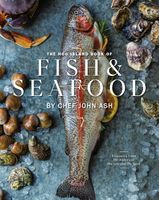Advertisement
About Hog Island
Appears in
By John Ash
Published 2023
The Hog Island Oyster Company was founded in 1983 by two young marine biologists with a big vision, a little cash, and a five-acre (two-hectare) aquaculture lease in Tomales Bay, California—a pristine coastal backwater less than fifty miles (80.5 km) north of San Francisco. John Finger and Michael Watchorn soon recruited Terry Sawyer (who had been an aquarist in the Husbandry Department at the nascent Monterey Bay Aquarium), and for many years, these three pioneered the emerging half-shell oyster trade in California. Of course, oysters had been a part of the California food scene for millennia. But until the 1980s, those oysters were either wild harvested from natural reefs or grown in gnarled clusters that had to be broken apart before they could shucked. They could be eaten raw, and certainly were, but they really didn’t lend themselves to the half-shell experience we enjoy today. John, Mike, and Terry launched Hog Island at the dawn of a major technological revolution in the shellfish industry: the use of hatcheries. Shellfish hatcheries brought an unprecedented level of precision, reliability, and biosecurity to the production of small, single-set “seed” oysters. These hatchery-reared baby oysters could be efficiently delivered by the tens of thousands to oyster farms, tended in baskets in the intertidal zone, and harvested as beautiful, single oysters instead of the rugged old clusters.

